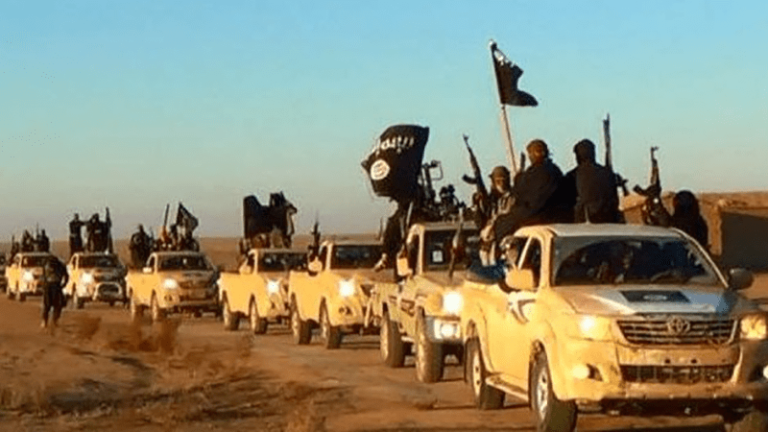
When the Islamic State of Iraq and the Levant (ISIL) emerged in the Arab region in 2013, there were many debates among Arab citizens about its sudden and mysterious appearance in Iraq and Syria, including many conspiracy theories. At the same time, there was also a heated debate in the United States and Europe about the social support of ISIL among Arabs. Some American and European right-wing groups spread stories about the relationship between Islam and ISIL and tried to convince people that the organization was the true face of Islam. They used this “brand” to attack Islam as a religion without having the necessary knowledge of the discussion within Muslim communities about how ISIL has hijacked Islam and how all credible Muslim institutions and clerics not only denounced ISIL but considered it as a “threat to Islam itself.” Even worse, many right-wing journalists and sites like Breitbart tried to create a mental connection between the religion of Islam and the worst practices of ISIL in Syria and Iraq, like its systematic sexual violence against women, forced marriage or sexual coercion of children, and various forms of sex trafficking. Such propagandistic maligning of Islam has exacerbated the rise of Islamophobia in the West and elsewhere
As the armed conflict in Syria, Iraq, Libya, and Yemen continues, ISIL has tried to create a safe haven for itself in these countries. The images of Islam there are colored by the organization’s heinous acts. How do the citizens of these Arab countries perceive ISIL and its actions? How successful are ISIL’s recruitment methods in the region? What are the connections between the rise of ISIL and the “Arab Spring”?
A 2016 public poll, the Arab Opinion Index, conducted by the Arab Center for Research and Policy Studies (ACRPS) in Doha, Qatar asked these questions. The recently released findings shed light on the perceptions and level of social support of ISIL among Arab citizens. The survey covered 12 Arab countries—Mauritania, Morocco, Algeria, Tunisia, Egypt, Sudan, Palestine, Lebanon, Jordan, Iraq, Saudi Arabia, and Kuwait—through personal, face-to-face interviews with 18,310 respondents.
How Arabs Perceive ISIL
An overwhelming majority of Arab respondents to the Arab Opinion Index (AOI) indicated that they had heard about ISIL or had some level of knowledge about it. Only 1 percent did not, showing that most Arabs know about or follow the activities of ISIL. Further, the survey showed that 89 percent of the respondents have very negative or somewhat negative views of ISIL, while 2 percent say they have a very positive view and 3 percent have a somewhat positive attitude toward it. One wonders if those who hold the 2 percent very positive view are really articulating an “anti-position,” that is, that they reject international involvement in their countries and, especially, the US strikes against ISIL targets. In a way, they could perceive ISIL positively because it is an entity that opposes US involvement; the organization’s actions may not play a big role in this positive view. The events in Iraq and Syria and the massacres committed against ordinary citizens or minorities like the Yazidis created a wave of shock among Arabs regarding the level of brutality ISIL has used against its victims, techniques such as torturing, burning, and execution.
Arab Public Opinion and the Fight against ISIL
As the United States’ involvement in Iraq and Syria increased, doubling the number of US troops on the ground, the situation in these countries reached the level of a humanitarian disaster. This complicated Arab public opinion and made gauging the ISIL factor by itself very challenging. In Syria, for example, the conditions of life continue to deteriorate as a result of the prolonged civil war and domination by armed groups—many of which have very different ideologies—of vast areas of the country’s territory, especially in the eastern provinces of Raqqa and Deir al-Zor, where ISIL exercises control.
Nearly half of Syria’s prewar population has been displaced. Approximately 5 million people have fled to neighboring countries as refugees and 7.6 million are internally displaced. Such a vulnerable population easily falls prey to human trafficking and to the ISIL ideology.
The AOI also asked respondents what measures are needed to eliminate ISIL from the region. Seventeen percent said to intensify military efforts, while 14 percent stated that the democratic transformation in the Arab countries must be supported to eliminate terrorism and ISIL, and 14 percent said that solving the Palestinian issue is the most important step that must be taken to end terrorism. Twelve percent stressed that finding a solution to the Syrian crisis would go a long way to eradicating terrorism. In general, Arab public opinion articulates that confronting terrorism means adopting an integrated package of political, economic, social, and military measures.
In contrast, US public opinion focuses only on military options as effective ways to carry out the US war on terrorism. A 2016 Gallup poll shows that US citizens overwhelmingly (79 percent) favor military force or airstrikes as the best way to deal with ISIL in the Middle East. Recently, President Trump even relaxed certain rules that prevent civilian casualties in US military actions in Somalia and the Horn of Africa, thus expanding the war against Islamist militants in that region.
The Linkage between ISIL and the “Arab Spring”
Some of the most important questions in the Arab Opinion Index were regarding Arabs’ perception of the “Arab Spring,” since many apparently believe that the revolutions that began in 2011 led to the birth of ISIL and other terrorist organizations. In contrast to such an opinion, the survey showed that the majority of the Arab public views positively the 2011 peaceful uprisings that started in Tunisia, Egypt, Libya, Yemen, and Syria. Arab public opinion generally indicated that such revolutions and popular protests were motivated by peaceful activists demonstrating against dictatorial regimes, with huge expectations as to what such “revolutions” could bring. The poll showed that Arab public opinion is divided on the reality and future of Arab revolutions, however, with 45 percent of respondents saying that the Arab Spring is in a state of stalemate but that it will eventually achieve its goals, compared with 39 percent saying that the Arab Spring is over. Finally, only 3 percent considered the 2011 revolutions as conspiracies or as driven by factors external to the Arab world.
Nevertheless, the relationship between the failure of such a transition and the appearance of ISIL on the political scene in the region cannot be ignored. Fifty-two percent of respondents expressed limited or significant concerns about the increased influence of Islamist political parties, while 42 percent said they had no fears in this regard. A larger majority, or 59 percent, stated that they had concerns about secular movements, while 33 percent stated that they had no concerns. The existence of these types of fears or concerns—regarding both Islamist and secular movements—shows that the state of division and polarization in Arab public opinion has led to a general and conservative view of both parties and their fears. The incompatibility between these movements and their inability to dispel citizens’ fears will present an obstacle to democratization: they could allow non-democratic institutions and agencies to exploit citizens’ concerns and turn toward authoritarianism.
As a comparison to the Arab opinion surveys done before, in 2014 and 2015, about perceptions of ISIL, data show that the level of interest in following the actions of the organization among Arabs has decreased from 88 percent in 2014, to 76 percent in 2015, and to 66 percent in 2016. This decline reflects that the Arab public was more interested in the first years of the rise of ISIL in the region and, especially, after the fall of Mosul in Iraq and Raqqa in Syria. It is important to note that such interest is closely linked to the development of events in Syria and Iraq and the creation of the international coalition against ISIL by the United States.
In conclusion, we can say that the imaginary links between ISIL and Islam, or ISIL and Arabs, are false. In fact, the overwhelming majority of Arabs want to see ISIL eliminated and are committed to the idea of change and the principles of good governance and democracy.
The autocrats in the region and their apologists in the West can no longer argue that the Arabs are satisfied with authoritarian rule This is not only a misperception, but it misrepresents the new social movement that has emerged in the region after the Arab Spring, one that is growing thanks to the hard work of human rights and democracy activists.

